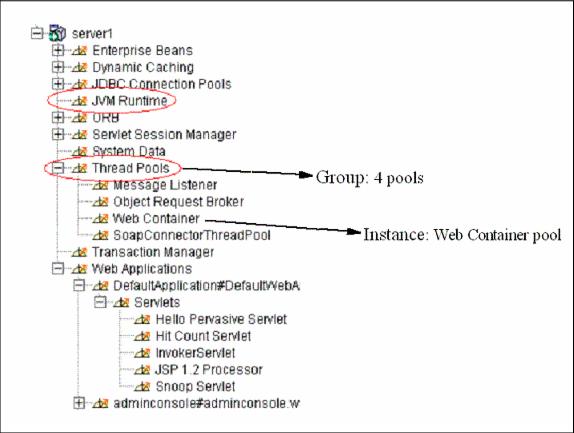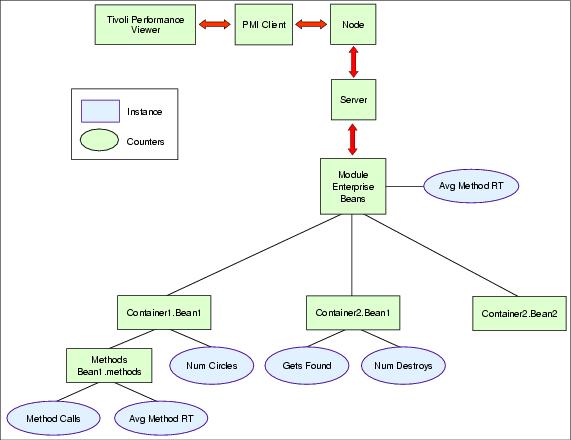Performance data hierarchy
Performance data is provided in a centralized hierarchy of the following objects to help provide some logical ordering:
Each resource category (module) has a related set of counters. The counters contain values for performance data that can have an impact on system performance.
Modules can have instances, which are single instantiations of an object of a class. Counters can be assigned to any number of modules and instances. Figure 16-2 shows how this looks like in Tivoli Performance Viewer.

Figure 16-2 Tivoli Performance Viewer
Figure 16-3 shows the counter Avg Method RT assigned to both the enterprise beans module and the methods of the Container1.Bean1 instance. Figure 16-3 also shows a hierarchy of data collections that are organized for reporting to the Tivoli Performance Viewer.

Figure 16-3 Example performance group hierarchy
A subset of counters is available based on the instrumentation level chosen for the particular module or instance. Counters are enabled at the module level and can be enabled or disabled for elements within the module. For example, in the figure, if the Module Enterprise Beans module is enabled, its Avg Method RT counter is enabled by default. However, you can then disable the Avg Method RT counter for the Methods Beans1.methods and the aggregate response time reported for the whole Enterprise Beans module will no longer include Methods Bean1.methods data.
WebSphere is a trademark of the IBM Corporation in the United States, other countries, or both.
IBM is a trademark of the IBM Corporation in the United States, other countries, or both.
Tivoli is a trademark of the IBM Corporation in the United States, other countries, or both.